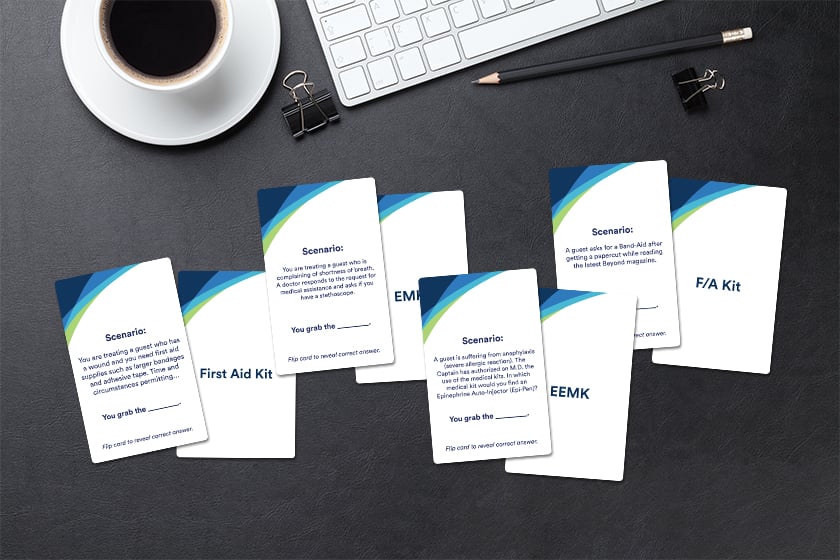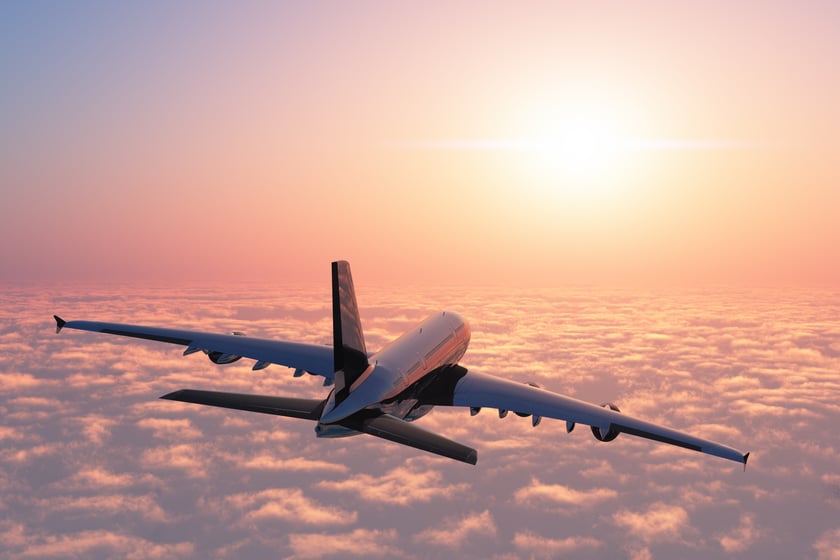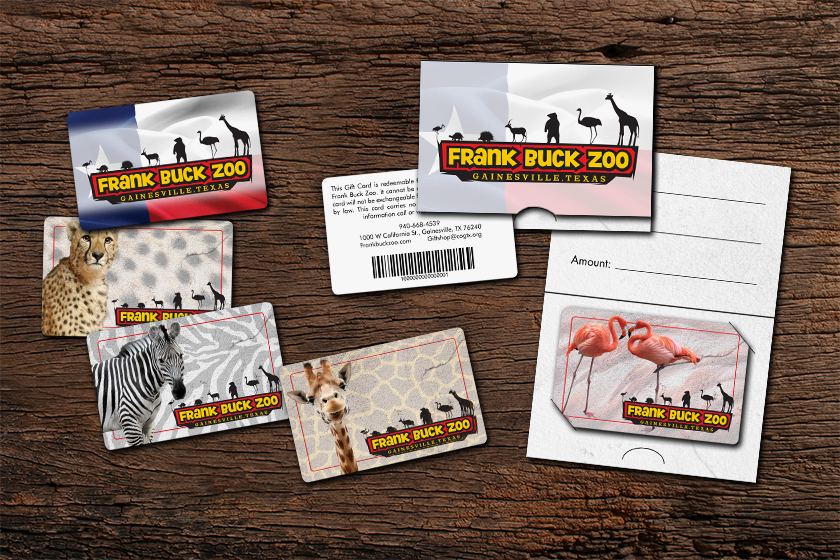Would you seek medical treatment from someone without the proper training? Maybe in extreme cases, but daily people go to professionals. When it comes to your health, you want your life in the hands of someone with the preparation and experience necessary to make the best possible decisions. In fact, you probably have the same expectations for every business. Airlines are no exception.
The Wright brothers' first flight was over 100 years ago, and for many people, air travel is so normalized they don't even think about it. But the logistics of air travel are nothing to scoff at; every year 1 billion passengers and 44.3 billion pounds of freight fly through the skies. Though rare, air disasters do occur, which is why it is essential that airline staff are correctly educated on every scenario they may see in the air to ensure the safety of everyone on board.
.jpg?width=840&name=Informational-Card-Versions-Crew-Alaska-Airlines-KT5700-HS099556-Sample%20(1).jpg)
Thankfully, airlines are well aware of the challenges they may face and work hard to ensure their staff is ready for anything. Here are some tools and strategies that can help your airline training program.
Airline Safety Card
Remember back when you were in school, and you would use flashcards to memorize information? It was a practical way to improve memory, so when it was time for the test recollecting that information was a breeze. It might seem like an elementary tactic, but it works, which is why some airlines are using a similar tool: an airline safety card.
An airline safety card is a pocket-sized tool that can help make the training process consistent and effective. An airline safety card can be used to help airline staff learn how to deal with unruly passengers or what they need to do in specific emergencies. Most of the time, travelers are well behaved on planes and emergencies rarely happen, but unfortunately, situations do arise where this kind of training is needed.
.jpg?width=840&name=Informational-Card-Versions-Situational-Reaction-Cards-Alaska-Airlines-KT5700-HS099556-Sample%20(1).jpg) Like I mentioned, these airline tools help you memorize how to react in specific situations. Repetition is one of the key factors for remembering things. One way to help remember the information on these cards is called spaced repetition. In the spaced repetition technique, you repeat something, wait a short time, repeat it, and the cycle continues. By giving your trainees effective memorization tactics, it helps set them up for success.
Like I mentioned, these airline tools help you memorize how to react in specific situations. Repetition is one of the key factors for remembering things. One way to help remember the information on these cards is called spaced repetition. In the spaced repetition technique, you repeat something, wait a short time, repeat it, and the cycle continues. By giving your trainees effective memorization tactics, it helps set them up for success.
Of course, these cards also can come decked out with the branding for your airline. By adding your colors and logo to these training tools, you take ownership of them; showing your trainees that the way they handle these situations is important to you and the company. This isn't just any company's airline safety card, they're yours, and your employees will better understand how to represent the company under challenging situations.
Flashcards for your Airline Training Program
Memorization is only one of the key methods that you can use for training. After you have your employees memorize their specific tasks and duties, it's time to put them into action. Role-playing is a typical strategy that allows the trainee to be put in a situation and rehearse how they would react. And that's the concept behind flashcards. These cards run down specific scenarios and allow the learner to put themselves in a position that they could find themselves in on the job.

These flashcards are great because they are like a training simulator for the mind without the threat of a mistake negatively affecting the airline or customers. It gives your trainees the ability to be at ease, allowing them to focus on improving their skills rather than the ramifications for a misstep. These flashcards are a simple, yet effective training tool that ensures no one gets hurt during the airline training process and helps your trainees fixate on becoming the best they can be.
Flight Training
Now that you have all the training tools you need to sharpen your mind, it's time to put the knowledge they have learned into action. What do I mean by that? Flight training or flight simulators. The approach to training differs depending on the type of employee, which makes sense because airline employees have very different roles, but practice flights are a standard training exercise.

Mock flights are thought to be the most impactful training out there for airline staff. It makes sense; employees get a feeling of what it's like to handle scenarios and how to perform their everyday tasks. Instead of reading about what they may face, they get to experience them firsthand. While practice flights make for invaluable training exercises for employees, they also serve a useful purpose for instructors: an evaluation.
The last thing that you want to do is put an unprepared employee into the air. It can be a disaster, with the potential to frustrate or even lose customers. Plus, it can be dangerous. Practice flights give instructors the ability to see how an employee will act in a given scenario, giving them the confidence they need to send their newly trained employee out on the job.
The importance of properly training your employees cannot be understated. Make sure you have all the tools necessary to get your employees ready to join your workforce. Need training tools with your logo, colors, and branding? Give us a call; the experts at Plastic Printers are happy to help!
Share this
You May Also Like
These Related Stories

Marketing Strategies to Boost your Zoo

Event Prep 101 - A Guide to Attending Conferences




.png?width=534&height=632&name=White%20Aesthetic%20Vision%20Board%20Instagram%20Story%20(1).png)